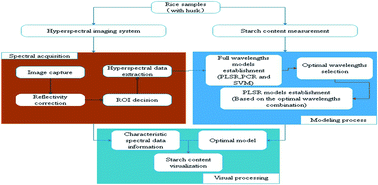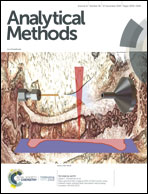Development of simplified models for the nondestructive testing of rice with husk starch content using hyperspectral imaging technology
Abstract
In this study, we aimed to establish the predictive models of the starch content in rice (with husk) using a hyperspectral imaging system (HSI) for a collection of 87 different rice varieties in China. This was conducted in the wavelength range of 938–2215 nm with the first established multivariate calibration models over the full wavelength range by using partial least-squares regression (PLSR), principal component regression (PCR) and support vector machine (SVM). In the process of predictive model optimization, the optimal wavelengths were selected by using regression coefficients as discriminating factors to establish PLSR models; according to the regression coefficient and root mean square error of models, the optimal wavelengths were filtered from 7 to 5. The model based on the seven optimal wavelengths was determined as the optimal optimization model with RP2 of 0.8029 and RMSEP of 1.79%. The mapping of the starch content was achieved by transferring a quantitative model to each pixel. According to the visualization image, the distribution of rice starch could be understood, thus realizing the possibility of the on-line detection of starch contents by using the hyperspectral imaging technology.



 Please wait while we load your content...
Please wait while we load your content...